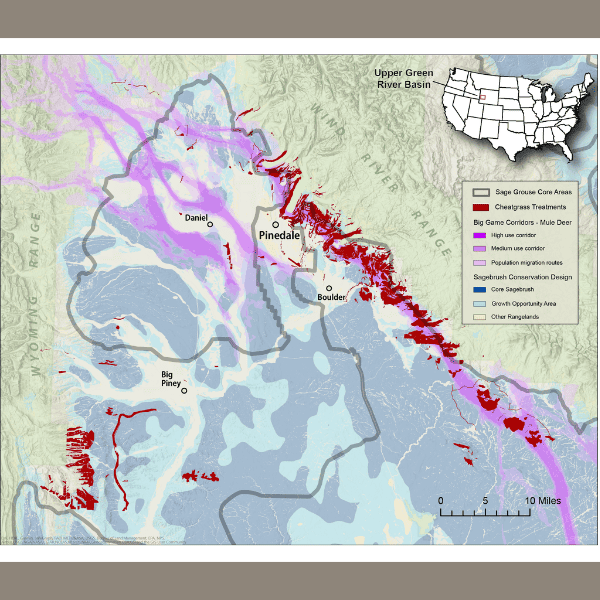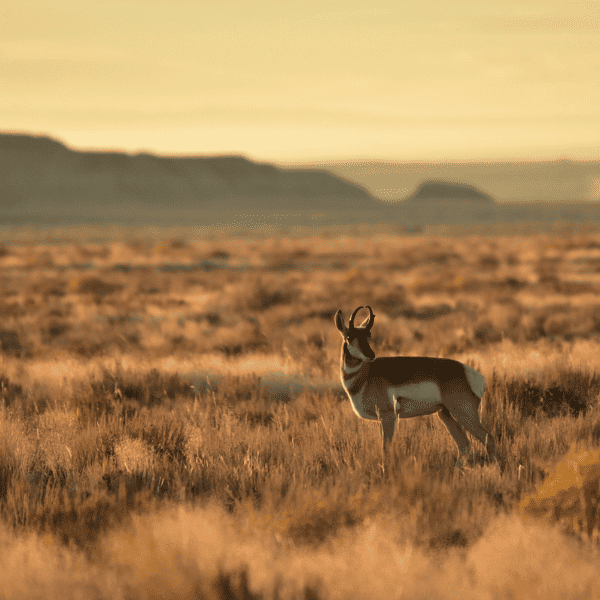
Prairie-chicken Restoration Efforts Take Flight in Southeast Colorado
LPCI NEWS RELEASE: Why did the lesser prairie-chicken cross the state line? If Colorado Parks and Wildlife (CPW) biologists are successful, the answer will be to rebuild populations of this uncommon prairie grouse, which has mostly disappeared from the grasslands of the southeast corner of the state. Read about the relocation project >

Keeping Water In Colorado’s Gunnison Basin
June 12, 2017
Learning To Think Like Water & Photos From SGI’s 7th Annual Workshop
June 21, 2017Why did the lesser prairie-chicken cross the state line?
If Colorado Parks and Wildlife (CPW) biologists are successful, the answer will be to rebuild populations of this uncommon prairie grouse, which has mostly disappeared from the grasslands of the southeast corner of the state.
CPW wildlife biologists Jonathan Reitz and Liza Rossi recently completed a month-long effort to catch and relocate lesser prairie-chickens from stronghold populations in Kansas. It’s part of a joint four-year operation between CPW, the Kansas Department of Wildlife, Parks and Tourism, and the U.S. Forest Service to rebuild prairie chicken populations in a 330,000-acre swath of southeastern Colorado and southwestern Kansas.

Liza Rossi, Colorado Parks and Wildlife Bird Conservation Coordinator, and Trent Delahanty, CPW technician, release two lesser prairie-chickens on the Comanche National Grasslands during a recent relocation from Kansas.
The target recovery area includes privately owned rangeland, Conservation Reserve Program grassland, the Cimarron National Grassland in Kansas, and the Comanche National Grassland in Baca County, Colorado. Both the Cimarron and Comanche grasslands are owned and managed by the U.S. Forest Service.
Historically, the region was home to large flocks of lesser prairie-chickens, but populations have fallen significantly since Euro-American settlement. By 2016, biologists counted just two males on the Comanche Grassland and five males on the Cimarron.
Christian Hagen, science advisor to the Lesser Prairie-Chicken Initiative (LPCI) notes that, while translocating birds is a last resort in conservation triage, it can be effective when done in concert with habitat management or restoration.
“Conservation efforts such as those underway through LPCI and WAFWA [the Western Association of Fish and Wildlife Agencies] can help bolster these fragile translocated populations as they make their way in an unfamiliar landscape,” Hagen said.
Both LPCI and WAFWA offer technical and financial assistance to private landowners, who own and manage 95% of the land within the lesser prairie-chicken’s current range, to improve grassland habitat, benefitting both the bird and agricultural operations.

Abby Athen, Kansas Department of Wildlife, Parks and Tourism, uses calipers to measure a male lesser prairie-chicken.
Last fall, Reitz and Rossi relocated 13 males and one female to Comanche National Grasslands. This spring, they relocated an additional 19 hens and 29 roosters. And they have ambitious goals over the next two years, targeting around 120 lesser prairie-chickens for relocation to Colorado.
But the biologists are discovering a big problem with relocating the birds. Roosters naturally gather in what is known as a “lek” to perform displays designed to attract hens for mating. But they don’t adapt well when their lek is disrupted, often taking flight after relocation in hopes of returning to their home leks.
“Their home lek is the center of their universe,” Reitz said. “Many relocated birds appear to be very unsettled, having been removed from that center.”
“We have observed several prairie chickens having traveled 30 miles or more from the release site,” he said.
CPW biologists are hopeful that the new project, which targets a large number of birds and uses sophisticated technology to retain and track the birds, will succeed.
In the current project, each relocated bird is being banded and outfitted with a radio transmitter. CPW crews on the ground and in the air track the movements of the birds. The transmitters emit a distinct signal when the bird has died, so CPW staff can find them and try to determine a cause of death.
Biologists are employing some high-tech devices to trick the prairie-chickens into staying put after relocation. At release sites, CPW staff is deploying “call boxes” programmed to play cackles and other sounds male lesser prairie-chickens make when displaying on a lek.
“We have technicians on the ground tracking the birds as they spread out,” Reitz said. “We will be using an airplane to find them and point our technicians in the right direction. So we can determine if hens are nesting and whether they succeed in hatching chicks.”
Already, CPW biologists are seeing signs of success. Several of the recently relocated birds are remaining in the release area. And recently, CPW technicians documented a group of relocated birds “booming” together.
More trapping is planned in April 2018 and 2019. A doctoral candidate from Kansas State University will join the project this coming August to assist with the data collection and analysis as tracking and research of the birds’ movements proceeds.
Stay tuned for updates!




